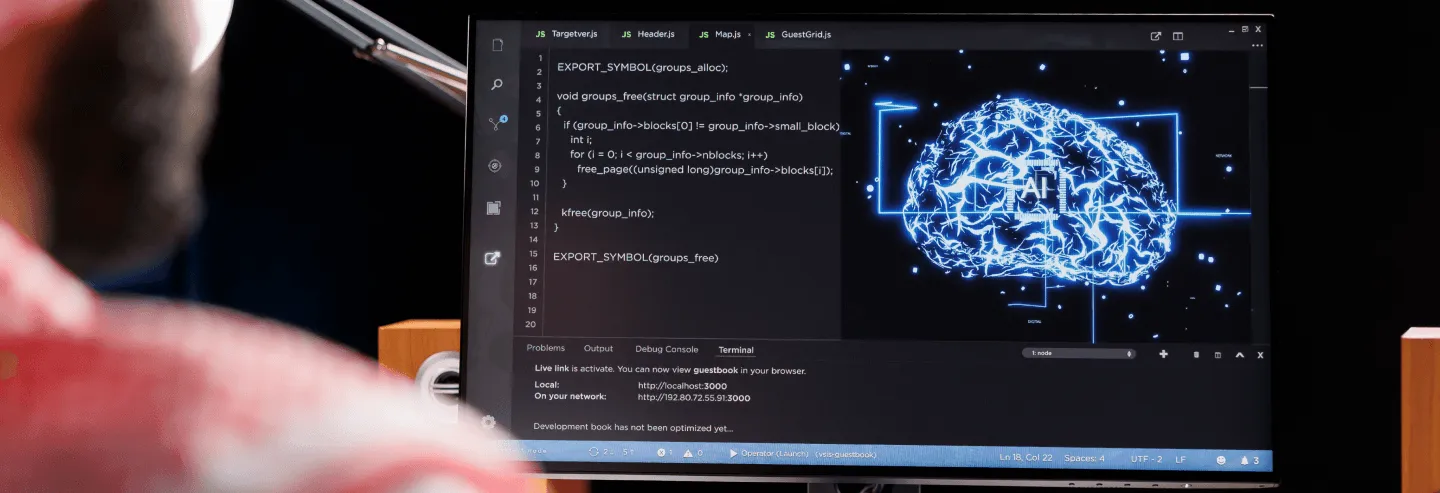QML has the potential to solve some of the most complex problems in science and technology, such as quantum system simulation and quantum optimization. In this article, we will explore the field of quantum machine learning and how it is bridging the gap between quantum computing and AI.
What is quantum computing?
Quantum computing is a branch of computer science that uses quantum mechanics to perform computations. Unlike classical computing, which uses bits to represent information, quantum computing uses qubits, which can be in a superposition state of zero and one at the same time.This technology has the potential to revolutionize computing by enabling computations that are unattainable for classical computing. For example, Shor's algorithm can factor large numbers in polynomial time, making factorization-based cryptographic systems vulnerable.
Quantum computing can also be used for the simulation of quantum systems, which is of great importance in physics and chemistry. However, it is still at an early stage of development. Most of the work is focused on building qubits and reducing errors in quantum computations. Qubits are very sensitive to noise and environmental perturbations, so error correction techniques are required to perform useful calculations.
Despite these challenges, quantum computing is one of the most promising areas of computing. Many companies and research organizations are investing in the development of quantum technologies. It is an emerging technology that has the potential to fundamentally change the way computations are performed. Although there are still many challenges to overcome, research and development in this field are advancing rapidly, promising an exciting future for quantum computing.
What is quantum machine learning?
Machine learning (ML) is a branch of AI that focuses on developing algorithms that enable computers to learn autonomously from data. This has driven many advances in areas such as computer vision, natural language processing, and robotics. On the other hand, quantum computing is a new form of information processing that is based on the principles of quantum mechanics. It can lead to solving some of the most challenging problems in computing, such as the simulation of complex systems and factoring large numbers. QML combines these two areas to leverage the advantages of QC in AI.
How does quantum machine learning work?
It uses quantum algorithms to solve machine-learning problems. Instead of representing data as vectors in Euclidean space, data is represented as quantum states in Hilbert space. Quantum algorithms can manipulate these states to perform more efficient computations than classical algorithms.
The most widely used algorithm in QML is the quantum machine learning algorithm or QMLA, which is an optimization algorithm that uses a quantum neural network to classify data. QMLA has proven to be more efficient than classical algorithms in classifying images and identifying patterns in complex data.
What are the applications of quantum machine learning?
One of the most promising applications is in the simulation of complex quantum systems. Simulation of molecules and materials is a computationally expensive problem that requires large amounts of computational resources. QML could be able to speed up this process and solve problems that are impossible to solve with classical AI. For example, it has been used for the simulation of molecules in quantum chemistry and the prediction of material properties in materials science.
Another application is in data classification and function optimization. To classify large data sets, such as images or text, and to optimize functions more efficiently than classical algorithms. For example, in medical image classification, early disease detection, and investment portfolio optimization in finance.
In addition, it has applications in artificial intelligence for decision-making, robotics, and cybersecurity. In decision-making, it can improve the ability of AI to learn and adapt to new data and situations. In Robotics, boost the ability of robots to process and analyze information in real-time. It can also help in cybersecurity for threat detection and attack prevention.
What are the challenges of quantum machine learning?
Although it can transform AI, it still faces several challenges. One of the main challenges is the complexity of implementing quantum algorithms. Quantum algorithms are very sensitive to errors and require specialized hardware and software to function properly. Quantum noise and decoherence, can negatively affect the performance of the algorithms. In addition, creating quantum neural networks is also challenging, as it requires an understanding of the principles of quantum mechanics and quantum programming.
Another challenge is the need for more data to train quantum algorithms. Although they may be more efficient than classical algorithms in some cases, large data sets are still needed to train quantum neural networks. Collecting large data sets is expensive and often requires access to specialized resources.
Despite these challenges, quantum machine learning is advancing rapidly; the combination of QC and AI could potentially solve some of the most complex problems in science and technology. It is arguably an innovative approach that uses the quantum nature of systems to help with natural language processing, computer vision, and robotics.









